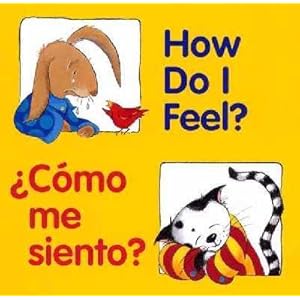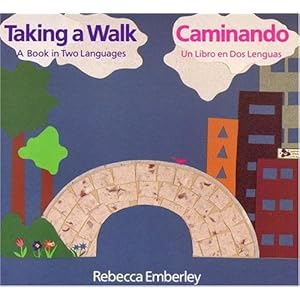
Considering God’s Creation is a one-year science program designed especially for homeschoolers. This is not a public or private-school textbook, modified for home use. Why is that important? Well, there are several problems with these books. First, they have to conform to state and federal standards, which may or may not be very unbiblical in either their teaching or their worldview. Also, even Christian private school texts are designed for one grade to use at a time, complicating life for mothers of many children. Finally, a lot of text books-type programs are simply very boring. Since science is one of the most interesting and vibrant subjects we can learn about, this is truly a shame! If we want our children to love God’s creation, we need to give them a delight for science.
How is Considering God’s Creation special? To start with, this program is very inexpensive. It can be used by all your children in grades 2-7, and costs only $29.95 and includes the Teacher’s Manual, the Student Book, and a CD. The Student book is reproducible, but you can also buy addition workbooks for only $13.95. I think that is cheaper then copying, and that way the materials can stay in a nice book. My children love to keep their books nice and not have the pages cut out, so that is what we chose to do. They are sharing the book and when we use this program again later I will just purchase more. Most of the workbook pages can be used in the book, except for the pages which have cut-outs on them.
Considering God’s Creation covers a lot of science. It begins with learning about the days of creation, and then moves through the subjects pretty closely to the order of creation. The sequence begins with space, then basic earth science, rocks, weather, plants, animals, animal A&P, and the human body. This is a lot to cover in a teachers manual that only contains 130 pages! How do they do this? Well, Considering God’ Creation has a broad scope, but much less depth then some programs. There is still enough in here to be a very complete curriculum, however. There is not a lot of fluff here, it is pretty bare-bones. This is good news for busy homeschooling moms who don’t want to sift through the babble just to get to the good stuff! A lot of the learning is done in the notebook, too, which is good for retention.

Experiments. These are very easy for mom to set up and use basic materials. Some of us prefer to stick to reading about science instead of doing it, so the easier and quicker the better! Easy elementary experiments such as watching celery draw up colored water, filling a bottle with air to show how a fish’s swim bladder works, and using a flashlight to demonstrate why we can’t see starts in the daytime.
Activities: One of the simple but helpful activities we did was using people holding hands to explain the pull of gravity. This was simple and fun, but made the abstract ideas concrete for my young kids. One of the other activities that stuck out was the idea of using cookie dough to show how fossil imprints form. There are lots of these activates to really imprint eh basics of science in an easy to understand way.
Reading: Each lesson includes a section to be read to the child. These are always short, typically less then a page, but explain everything so perfectly for the little children. Examples such as comparing the layers of the earth to the parts of eggs help children comprehend difficult ideas. Each lesson also has a Bible reading, which encourages deep thinking. The child is supposed to look up and read the passages for themselves if they are able.
The notebook/workbook is a delight of it’s own, especially for lapbooking and notebooking families! It is about twice as think as the Teacher’s book, and is chock full of stuff to do! There are pop ups, mini books, notebook pages, charts, and more. There are also games included, and these cut-out pieces should probably be glued onto cardstock to work well. My favorite part of the program is the “detective” pages. These are work-sheet type pages that are designed for nature study. For example, the “Flower Detective” pages have illustrations for different leaf placement, veins, shape, and edges, and flower placement, color, shapes and number of petals. This could really encourage attention to detail and thoroughness, and is an excellent introduction to the various skills needed for identification. There are varying numbers of these detective pages included for each subject. There are 5 “plant detective” pages, and each one has a notebook page with a decorative border for sketching on the facing side. If you need more you can always copy them.

The CD is probably my least favorite part of the program, but auditory learners like Bop love it. The songs include The Water Cycle, The Planets, Bear Fruit, The Nervous System, and Try, Try again. Some of the melodies are frankly irritating to me but the children seem to really listen to them and enjoy them. Of course, this curriculum is very complete without the CD if you don’t have a little listener like I do!
There are many ways to use Considering God’s Creation. You can use it as a one-year curriculum, going through one lesson a week. You could use the parts as you need them, going into more depth with other books or curriculum. You could even use the Student book for the foundation of a nature study journal, copying the sheets as you need them. But my favorite idea for this is to use the program as a spine for a longer study. The notebook is perfect for extended use, as each child could have their own and go through it as needed. With the addition of lots of books for each topic, this one science program could last a family many years, maybe even through all of the elementary grades. That makes the initial investment very cost –effective, when coupled with library books! This is what I am seriously thinking about doing ourselves.
So what do I like about
Considering God’s Creation? I really appreciate how the ‘cut-out’ pages (flaps, cards for games, minibook pieces, etc) are on their own pages, so there are not cut-up sheets left in the book. I am still surprised by the amount of info contained in here, everytime I look I see something new. I just love the detective pages and how much nature study is encouraged. Nature study is very important to me, but I know a lot of people struggle with how to implement it, and this program could be very helpful to them. The explanations in the text are perfect for the suggested ages, and they aren’t too long or to short.
Visit Eagle’s Wings to see sample pages from Considering God’s Creation, and go to The Old Schoolhouse Crew Blog to read more reviews.
I received this product free of charge
as a member of The Old Schoolhouse Review Crew,
for review purposes. I promise to be honest
and fair in my reviews, and I received no
other compensation in exchange for my review.
to read more reviews on this product.

 So I was delighted to get the chance to review Read for the Heart. This beautiful thick paperback “book-about-books” was wrote by a homeschool graduate, Sarah Clarkson. Sarah is the oldest daughter of one of my favorite authors of homeschool encouragement books, Sally Clarkson. This book is published by Apologia, the well-known publisher of the science curriculum by the same name, and a variety of books, including Good Morning, God, which I reviewed earlier.
So I was delighted to get the chance to review Read for the Heart. This beautiful thick paperback “book-about-books” was wrote by a homeschool graduate, Sarah Clarkson. Sarah is the oldest daughter of one of my favorite authors of homeschool encouragement books, Sally Clarkson. This book is published by Apologia, the well-known publisher of the science curriculum by the same name, and a variety of books, including Good Morning, God, which I reviewed earlier.


























 MonkiSee is a program for children ages 3 months to 3 years, created to teach the youngest children how to read. There are several components to the program, including DVDs, flash cards, books, and video flash cards on DVD. We received the “Baby’s First Words” DVD and a book, “Know Your Monkey”.
MonkiSee is a program for children ages 3 months to 3 years, created to teach the youngest children how to read. There are several components to the program, including DVDs, flash cards, books, and video flash cards on DVD. We received the “Baby’s First Words” DVD and a book, “Know Your Monkey”. 

 Be sure to stop by
Be sure to stop by  One of our favorite books from last week was The Usborne Big Book of Things to Spot.
One of our favorite books from last week was The Usborne Big Book of Things to Spot.












